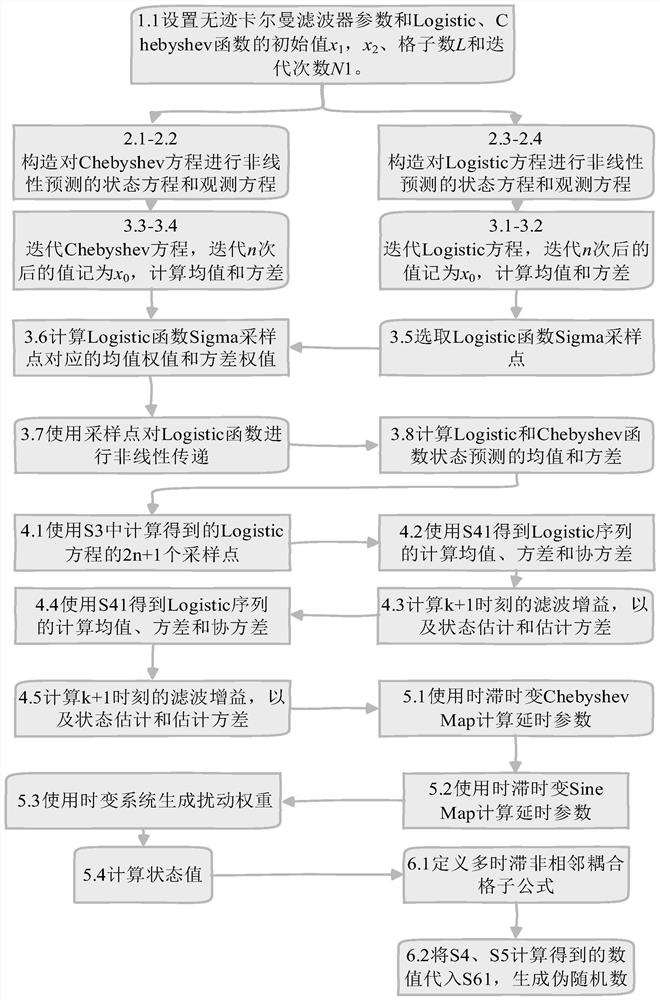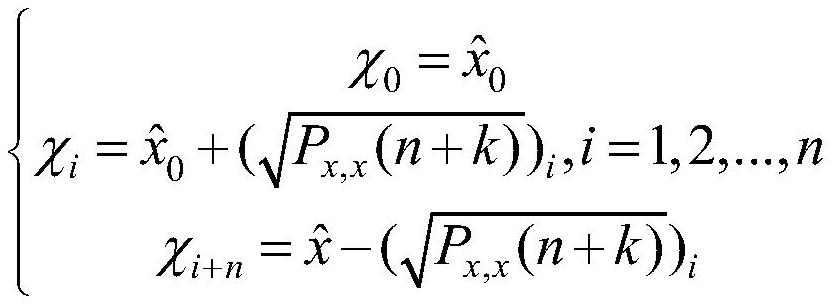Novel pseudo-random number generation method based on multi-time-delay non-adjacent coupling grids
A pseudo-random number, non-adjacent technology, applied in the field of information security, can solve the problems of uneven distribution of periodic windows and pseudo-random sequences, narrow parameter range, etc., to achieve the effect of combating chaotic degradation behavior and improving complexity
- Summary
- Abstract
- Description
- Claims
- Application Information
AI Technical Summary
Problems solved by technology
Method used
Image
Examples
Embodiment 1
[0040] Description of Embodiment Symbols
[0041]
[0042] A novel pseudo-random number generation method based on multi-delay non-adjacent coupled lattices, such as figure 1 As shown, the pseudo-random number generation method proposed by the present invention is divided into three parts. The first part is to set the Logistic equation, the Chebyshev equation and the initial value of the system, and construct an unscented Kalman filter to perform non-linear analysis on the Logistic equation and the Chebyshev equation. Linear prediction to obtain the state estimates of Logistic and Chebyshev, involving steps S1-S4; the second part is calculating the time-delay time-varying system to generate disturbance weights, involving step S5; the third part is the pseudo-random number generation process, using multi-delay non-linear The adjacent coupled lattice formula generates pseudo-random numbers, which involves step S6.
[0043] Step S1, setting system parameters, including the foll...
PUM
 Login to View More
Login to View More Abstract
Description
Claims
Application Information
 Login to View More
Login to View More - R&D
- Intellectual Property
- Life Sciences
- Materials
- Tech Scout
- Unparalleled Data Quality
- Higher Quality Content
- 60% Fewer Hallucinations
Browse by: Latest US Patents, China's latest patents, Technical Efficacy Thesaurus, Application Domain, Technology Topic, Popular Technical Reports.
© 2025 PatSnap. All rights reserved.Legal|Privacy policy|Modern Slavery Act Transparency Statement|Sitemap|About US| Contact US: help@patsnap.com



